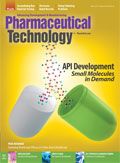Streamlining Raw Materials Testing
The rapid testing of biologic raw materials can lead to greater efficiency.
GIPhotoStock/Cultura/getty images

To ensure the quality of raw materials used in biologic processes, the materials must be tested for identity and purity. Testing is the best way to determine if a vendor is meeting the needs of a drug manufacturer. Pharmaceutical Technology spoke to Foster T. Jordan, corporate senior vice-president of endotoxin and microbial detection at Charles River, to learn more about streamlining drug development by bringing safety testing directly to the manufacturing floor.
Testing locationPharmTech: Please describe the shift in safety testing location for biologic raw materials from the laboratory to the manufacturing floor. What is driving this change?
Jordan: Controlling the quality of raw materials used in cell culture-based biotech manufacturing processes is a complex process that needs to be measured consistently. The raw materials used in biomanufacturing-from inorganic salts and recombinant proteins to animal-derived serum-run the risk of becoming contaminated by adventitious agents, which can cause significant disruptions in the manufacturing process and availability of product. Yet biologics also have much higher financial value than small-molecule drugs. By shifting testing to the manufacturing floor, manufacturers can obtain results more quickly that ultimately lead to more efficient manufacturing practices.
PharmTech: What are some drawbacks and benefits associated with testing raw materials on the manufacturing floor?
Jordan: One major drawback is the short-term investment that companies will incur to make sure their manufacturing practices meet regulatory requirements for GMP testing outside the central lab. But the quicker results will, over the long term, help to reduce both financial and regulatory risk.
Testing toolsPharmTech: Which endotoxin and microbial detection products are most commonly used to test biologic raw materials?
Jordan: Kinetic LAL products such as Endochrome-K, KTA1, and PTS (all from Charles River) are examples of products used in biologics testing for endotoxins. The majority of biologics are still largely subjected to traditional microbiological testing methods, but interest in rapid testing methods is emerging.
Risks exposedPharmTech: Historically, what kinds of problems with biologic raw materials have been revealed through quality testing?
Jordan: Environmental microbiological organisms as well as gram-negative bacterial endotoxin are common contamination risks in biological manufacturing. By nature, biologics are subject to microbial contamination for many reasons. Manufacturers can validate the aseptic manufacturing process to prevent microbial contamination.
PharmTech: What special considerations must be taken into account when measuring bioburden in raw materials for biologics? What about when measuring bioburden for finished products?
Jordan: Manufacturers must exercise extreme caution when validating test procedures. Biological products cannot be terminally sterilized due to their natural instability to heat; therefore, much greater attention may be required to eliminate and/or prevent viable microbial organism contamination that could compromise the finished product. Because final product biological materials cannot be terminally sterilized, any contaminated products are a huge financial loss. In short, there must be a comprehensive, risk-based monitoring program-from raw materials, products in-process, and finished products-and these programs should all be supported by a solid quality assurance program.
Article DetailsPharmaceutical Technology
Vol. 39, No. 5
Page: 52
Citation: When referring to this article, please cite it as R. Hernandez, “Streamlining Raw Materials Testing,” Pharmaceutical Technology39 (5) 2015.

Drug Solutions Podcast: Applying Appropriate Analytics to Drug Development
March 26th 2024In this episode of the Drug Solutions Podcast, Jan Bekker, Vice President of Business Development, Commercial and Technical Operations at BioCina, discusses the latest analytical tools and their applications in the drug development market.